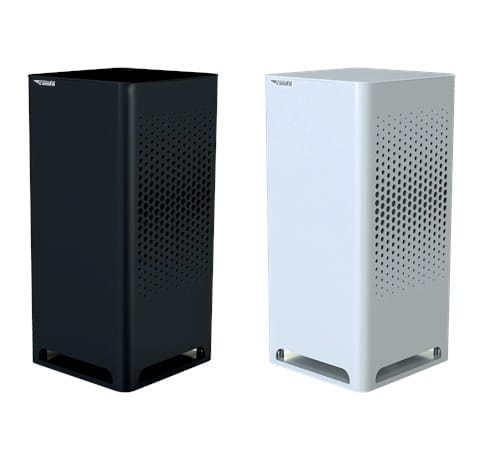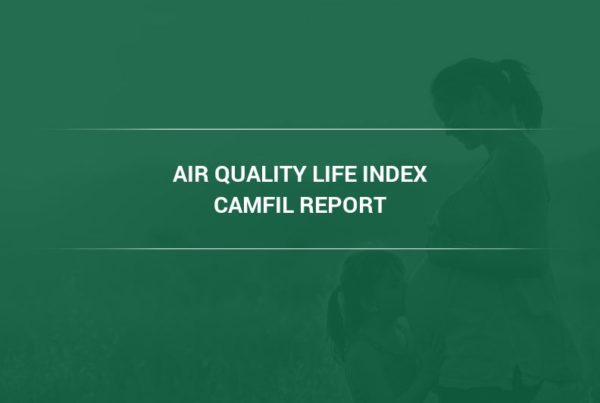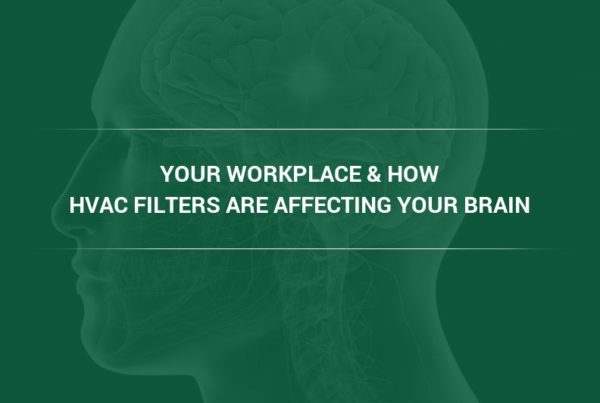Optimizing Your Workout with an Air Purifier — the Effects of Volatile Organic Compounds and Air Pollution on Athletic Performance
By this point in the year, many New Year’s resolutions have been abandoned, particularly those related to physical fitness. But if you’re committed to prioritizing your health and optimizing your fitness, you understand that every detail makes a difference when it comes to how you eat and exercise.
Just as the quality of your running shoes affects your stride and the quality of your pre-workout affects your energy levels, the quality of the air you breathe affects your cardio-respiratory system, which, in turn, affects every aspect of your physical fitness. In this article, read about the effects of air pollution on physical performance and how you can optimize your lung health with air filtration for your home gym. 
Indoor Air Pollution — What Pollutants are Found in Fitness Centers and Home Gyms?
Although most people are primarily concerned about the health effects of outdoor air pollution, indoor air can be as much as fifty times more polluted than outdoor air. Buildings from past decades were often designed with heavy seals to keep the polluted outdoor air outside, but could inadvertently trap pollution from indoor sources, as well as any outdoor pollutants that made their way inside through doors and windows.
Pollutants commonly found inside gyms and home gyms include:
-
- Particulate matter (PM). Particulate matter is a common air pollutant which is defined as any solid or liquid substance suspended in the air. There are three subcategories of particulate matter, based on the size of the particles: PM10 (anything less than ten microns in diameter), PM2.5 (anything less than 2.5 microns in diameter), and PM1 (anything less than 1 micron in diameter). The smallest particles can penetrate the lungs’ alveoli and enter the bloodstream, causing harm to major organs including the brain. Particulate matter includes common everyday pollutants such as pet dander, dust, and pollen, but can also include more directly harmful substances such as black carbon. The infected respiratory droplets that are responsible for spreading COVID-19 are also classified as particulate matter.
- Carbon monoxide (CO). Carbon monoxide is an odorless, colorless gas that can cause dizziness, confusion, and even death. While there are natural sources of carbon monoxide such as volcanoes or lighting, it is mostly a product of incomplete combustion, meaning it can come from everyday sources such as car engines, fireplaces, lanterns, stoves, and furnaces (1). If your home gym is in your garage, it is especially crucial to be aware of this potentially deadly pollutant.
- Volatile organic compounds (VOCs). A volatile organic compound is gaseous (or molecular) pollutants, which commonly originate from indoor sources such as cleaning chemicals, air fresheners, and even off-gassing from items of furniture (particularly low priced, mass-produced furniture). Volatile organic compounds are any chemical with a high vapor pressure and a low boiling point, meaning that they are in a gaseous state at room temperature. Commonly found VOCs include benzene, ethylene glycol, formaldehyde, methylene chloride, tetrachloroethylene, toluene, xylene, and 1,3-butadiene (2).
Other pollutants may include nitrogen oxides (NOx) and ozone (O3).
Your home gym most likely shares its air supply with the rest of your house, meaning that the pollution from your day-to-day activities could be affecting your workouts. The panel air filters used in most HVAC systems are designed to protect the equipment from excessive debris; this level of air filtration is not thorough enough to protect human lungs from most particulate matter, nor does it do anything to protect against gaseous pollutants.
How Does Air Pollution Affect Athletic Performance?
Scientific research has established a link between air pollution and athletic performance, which becomes more and more prominent the more advanced athletes become. In a 1986 literature review, researchers found that at the Olympic level, levels of air pollutants were predictors of how well athletes performed (3). Similar results were found in a study on high school track athletes; this study also found that short-term exposure to air pollution had the greatest effect on athletic performance (4).
Even more well-established is the impact of exercising in the presence of pollutants on overall respiratory health. Under physical exertion (even during activities such as yoga and weight-lifting), your muscles require more oxygen, causing you to take deeper breaths more frequently. As a result, you breathe more air while you are exercising, thereby increasing the volume of pollutants your lungs are exposed to during that time.
Because of the higher rate of breathing and increased airflow velocity during exercise, you are especially susceptible to the following effects of air pollution when you are working out:
- Respiratory irritation, including coughing, sneezing, watering eyes, sore throat, and runny nose.
- Worsening of respiratory conditions such as asthma and COPD.
- Increased likelihood of developing bronchitis and other respiratory infections.
- Dizziness, confusion, and decreased cognitive function.
Targeting Particulate Matter and Gaseous Pollutants with a Premium Air Purifier
As noted above, the standard air filters used in an HVAC system are not enough to protect human lungs from most pollutants. Furthermore, scientists have observed high levels of certain pollutants in public gyms and fitness centers, particularly VOCs, CO2, and CH2O (formaldehyde; 5).
You wouldn’t use equipment or consume protein shakes and pre-workouts that undermine your progress, much less actively harm you, so it is important to hold the air you breathe to the same standard.
To target gaseous pollutants, including volatile organic compounds, and particulate matter, use an air purifier that uses a scan-tested and certified lHEPA air filter and an activated carbon filter, such as Camfil’s City M. The City M is a standalone in-room air purifier that you can plug into any standard outlet and use immediately with no special installation or HVAC specifications required.
About Camfil Clean Air Solutions
For more than half a century, Camfil has been helping people breathe cleaner air. As a leading manufacturer of premium clean air solutions, we provide commercial and industrial systems for air filtration and air pollution control that improve worker and equipment productivity, minimize energy use, and benefit human health and the environment. We firmly believe that the best solutions for our customers are the best solutions for our planet, too. That’s why every step of the way – from design to delivery and across the product life cycle – we consider the impact of what we do on people and on the world around us. Through a fresh approach to problem-solving, innovative design, precise process control, and a strong customer focus we aim to conserve more, use less and find better ways – so we can all breathe easier.
The Camfil Group is headquartered in Stockholm, Sweden, and has 33 manufacturing sites, six R&D centers, local sales offices in 30 countries, and about 4,800 employees and growing. We proudly serve and support customers in a wide variety of industries and in communities across the world. To discover how Camfil USA can help you to protect people, processes and the environment, visit us at www.camfil.us/
##
Media Contact:
Lynne Laake
Camfil USA Air Filters
T: 888.599.6620
E: Lynne.Laake@camfil.com
F: Friend Camfil USA on Facebook
T: Follow Camfil USA on Twitter
Y: Watch Camfil Videos on YouTube
L: Follow our LinkedIn Page
Sources:
- https://www.cdc.gov/co/faqs.htm
- https://www.health.state.mn.us/communities/environment/air/toxins/voc.htm
- https://www.sciencedirect.com/science/article/abs/pii/0004698186903446
- https://jamanetwork.com/journals/jama/article-abstract/663749
- https://www.sciencedirect.com/science/article/abs/pii/S0360132314002856?np=y



